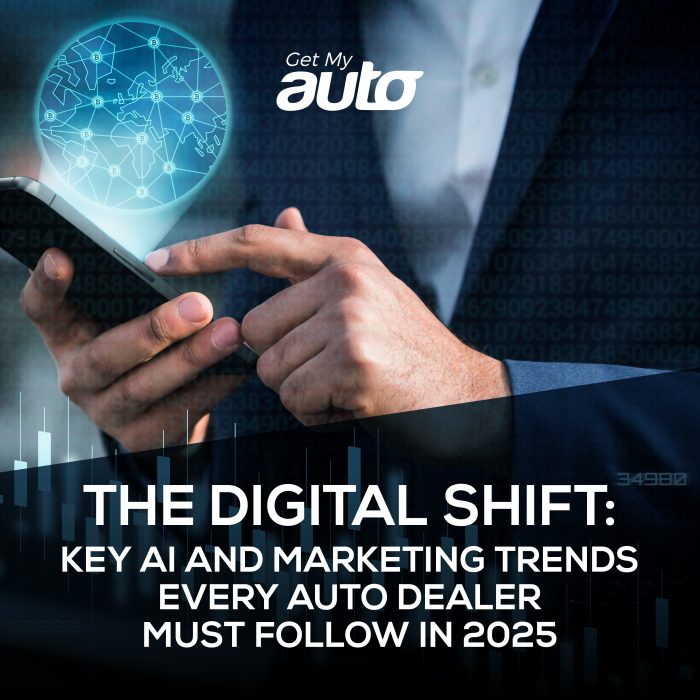In the age of AI-driven consumer behavior, decentralized search, and evolving retail dynamics, automotive dealers—whether independent or part of larger groups—must adopt smarter, more adaptive digital marketing strategies to remain competitive. With shoppers bouncing between platforms, relying on new search technologies, and expecting hyper-personalized experiences, the old playbooks are no longer enough.
This article explores the most critical digital marketing and AI trends shaping the auto retail space in 2025—and why ignoring them could mean falling behind.
1. AI-Powered Lead Engagement: The New Frontline
High-quality lead engagement is no longer a luxury—it’s the difference between closing a deal or losing it to a competitor. AI-powered CRMs and digital agents have become essential for addressing leads faster, smarter, and at scale.
The Rise of AI Agents in BDC Operations
AI Tools for auto dealers like Ava AI, Conversica, and VinSolutions with integrated AI are transforming how dealers manage their BDC workflows. These solutions can automatically respond to inquiries, schedule appointments, and re-engage cold leads—without human error or fatigue. Given that many dealers lose 30–50% of leads due to delayed follow-up or staff turnover, AI fills a critical gap.
Strategic Advantage
Dealers adopting AI for lead nurturing report increased appointment rates and higher close ratios, particularly in high-volume environments where speed and personalization matter most. For independent stores with limited staffing, these tools act as a 24/7 digital assistant.
2. AI-First Search Engines Are Changing Consumer Discovery
The rise of AI-first search engines like ChatGPT, Perplexity, and Google SGE (Search Generative Experience) is altering how car shoppers research and discover dealerships and inventory.
Merchant Feeds Are the New Marketplace
Both OpenAI (ChatGPT) and Perplexity now allow merchants to submit product and service feeds. These integrations are early-stage but free—and visibility is still wide open for dealers willing to act quickly.
Why It Matters
When a consumer asks ChatGPT for “the best used trucks near Denver,” the platform can pull directly from verified merchant feeds. Dealers who opt in are gaining early access to high-intent traffic on platforms where competition is still low, and organic visibility is still possible.
3. Navigating a Decentralized Digital Landscape
Today’s automotive buyer doesn’t follow a linear path. Consumers browse Cars.com, watch TikToks, ask questions on Reddit, read Google reviews, visit dealer websites, and increasingly interact with AI assistants—all before contacting a dealership.
Expanding Digital Presence Beyond Google
Forward-thinking auto dealers are building visibility across a range of channels: YouTube, Instagram Reels, Facebook Marketplace, CarGurus, influencer content, and voice search platforms. This decentralized behavior calls for omnichannel content strategies and consistent messaging across platforms.
Aligning Paid and Organic for Broader Reach
Dealers leveraging paid social, search, and video ads alongside optimized organic content can control more buyer touchpoints and reduce reliance on third-party lead providers. It’s not just about traffic—it’s about qualified visibility in the right micro-moments.
4. Predictive Inventory Marketing: Smarter Spending
AI-powered marketing platforms now enable predictive analytics for inventory decisions. These tools help determine which vehicles to promote, when, and through which channels—based on real-time demand signals, regional pricing trends, and audience behavior.
Dynamic Campaign Management
Instead of static monthly budgets, campaigns can now shift in real time based on what inventory is moving. For instance, if the local market sees increased search for hybrid SUVs, the system can automatically increase spend on those listings while scaling back others.
The Result
This approach improves ROI by ensuring every marketing dollar is aligned with what shoppers are actually looking for—no more guessing or outdated static strategies.
5. First-Party Data Is the New Fuel
As cookies fade out and data privacy rules tighten, first-party data is becoming one of the most valuable assets in a dealer’s toolkit. Larger groups are already adopting Customer Data Platforms (CDPs) to unify customer behavior across CRM, DMS, dealership websites, and service interactions.
The Advantage of Owning Your Data
By capturing emails, phone numbers, and digital interactions directly, dealers can build more effective retargeting, nurture flows, and segmented campaigns without relying on third-party providers. This data is also the foundation for AI personalization engines.
Small Dealer Consideration
Independent dealers without a CDP can still benefit by improving data capture points, setting up email marketing automations, and integrating their website forms with CRM tools like DealerSocket or Salesforce Automotive Cloud.
6. Local SEO and Reputation Management Are Mission-Critical
Search engines—especially with AI overlays—prioritize local, well-reviewed, and actively managed business profiles. Local SEO has long been important, but with the rise of voice search and AI-powered assistants, its influence has only grown.
Why Local Optimization Pays Off
Google Business Profile (formerly GMB) accuracy, regular posting, review responses, and high engagement rates directly influence visibility in both map packs and conversational search.
Tip for Dealers
Post weekly offers or updates, respond to all reviews (positive or negative), and add structured Q&A content to GBP and VDPs to help AI systems understand and recommend your dealership more accurately.
7. AI for Scalable Content and Personalization
Creating unique, engaging content for every vehicle, service, or landing page used to be impossible at scale. Now, it’s not only possible—it’s expected. Generative AI tools can help dealers personalize content based on region, inventory, seasonal trends, and buyer behavior.
More Than Just Listings
Use AI to generate:
- SEO-optimized vehicle detail pages (VDPs)
- Blog content around common questions (“What to look for in a used truck?”)
- Personalized service reminders or loyalty offers
- Landing pages tailored to ZIP code or demographic
Strategic Impact
This level of content sophistication improves organic rankings, paid campaign relevance scores, and overall consumer trust—all of which support lead conversion.
8. Attribution and ROI Measurement with AI Dashboards
One of the largest challenges dealers face is attribution—knowing which marketing channel actually drove the sale or appointment. With the rise of Looker Studio, GA4, and integrated attribution tools, advanced dealers are finally gaining clarity.
Connecting the Dots
Platforms like Fullpath (formerly AutoLeadStar) or custom dashboards blending CRM + website + ad data can now track touchpoints across multiple sessions and devices, offering a full-funnel view.
The Real Benefit
This allows smarter budget allocation: doubling down on high-performing channels and eliminating waste. Attribution is no longer a mystery—it’s measurable with the right stack.
9. Voice Search and AI Assistants Are Gaining Ground
Search is no longer just typed into Google. It’s spoken to Siri, Alexa, or asked within AI assistants like ChatGPT or Bing Copilot. For example, a buyer might say, “Find a reliable used SUV near me with under 40k miles.”
What Dealers Can Do
- Optimize website content with natural language FAQs
- Add schema markup to VDPs and service pages
- Create conversational content that mirrors real-world questions
Futureproofing the Funnel
As these interfaces mature, dealers who adapt their content for AI and voice will maintain visibility while others lose share to better-structured competitors.
10. Video Marketing: Still Underutilized, Still Powerful
Short-form video is one of the most powerful tools for automotive marketing—yet many dealers still underuse it. With the right tools and workflows, creating consistent, high-impact video content is easier than ever.
Formats That Drive Engagement
- Inventory walkarounds
- Test-drive previews
- Service department tours
- “How to buy a used car” tips
Tools to Scale Video
AI-powered tools like Pictory, Descript, and Synthesia allow you to produce branded, voice-over videos from simple scripts or text input—cutting editing costs and time significantly.
It’s Not Just About Digital. It’s About Being Smart.
The digital playing field has changed. It’s no longer about who can spend the most on ads or generate the most leads. It’s about who can use AI, automation, and data to operate more intelligently—capturing attention across more platforms, engaging leads better, and proving ROI with precision.
Auto retail is still a relationship business. But the way those relationships begin, evolve, and close is now digitally driven—and increasingly shaped by artificial intelligence.
Digital Transformation with Get My Auto
Get My Auto is more than a technology vendor—we’re a strategic partner to modern auto dealerships. As an all-in-one provider of dealership management software (DMS+), AI-powered CRM, inventory tools, and marketing automation, we help dealers streamline operations, engage leads more effectively, and stay ahead in an AI-driven retail environment. Whether you’re an independent store or a growing auto group, our platform and strategic guidance empower you to compete smarter and drive sustainable growth.


